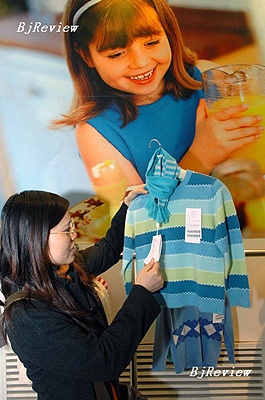
Once known for its remote, barren grasslands and deserts, Inner Mongolian Autonomous Region is now becoming home to innovative agricultural and industrial techniques through the efforts of its once nomadic people.
Cao Youtang, a local herdsman in his 40s, is a prime example of how much things have changed for the people there. At the No.6 Pasture of the Yili Industrial Group where Cao tends his herd, he and 40 other families make their livelihood from the 2,000 dairy cows they have imported from the Netherlands and New Zealand. Yili, located 20 km from Hohhot, the region's capital city, is now one of the major dairy producers in China. At 5 a.m. and 5 p.m. every day, cows owned by herdsmen proceed to the milking stations to be milked, just like they are going to work.
With two modern milking stations equipped with machines from Sweden, the pasture where Cao works can produce 15 tons of fresh milk every day, destined for Chinese markets and points further away that Cao has likely never heard of.
It was only several years ago that life dramatically changed for Cao and the people of Yili. In 2003, Cao decided to borrow 300,000 yuan from relatives and friends and another 200,000 yuan in loans from the Yili Group to purchase 30 cows.
Cao's family now owns 55 cows, and each cow brings in nearly 3,000 yuan each year. Most of his excess profits go towards buying more cows in order to reach his goal of 100. In these last four years, Cao has also learned more modern techniques for feeding cows as well as modern ideas on implementing disease prevention. "In the past when the cows were ill, I had to ride my motorbike to ask for a veterinarian, but now, I can deal with some minor illnesses myself," Cao told Beijing Review.
Pan Gang, President of the Yili Group, speaks freely of the advantages of raising cows in the pasture. At first, the group granted loans to the herdsmen who sold milk to Yili and paid off loans with the income. Later, the group built milking stations, milking the cows separately fed by herdsmen. However, these two procedures failed to ensure the quality of the milk since some herdsman did not choose quality feed and others did not know enough about disease prevention. Now in Yili, feed is monitored and new technologies have been introduced for feeding and disease prevention, helping secure the quality of the milk.
Yili, the official sponsor of diary products of the Beijing 2008 Olympic Games, has now extended its business into liquid milk, ice cream, milk powder, yogurt and material milk. Since 2003, its sales revenue has been the country's largest. Together with Mengniu, another large milk producer in the autonomous region, the two diary giants of Inner Mongolia occupy 54 percent of China's diary market, according to Tang Aijun, Mayor of Hohhot.
Transformed lifestyles
Due to the demands of productivity, along with the aid of the government, herdsmen have gradually abandoned their traditional nomadic lifestyle. Bilige, of the Ewenki ethnic group, is a herdsman living in the Ewenki Autonomous Banner (county) of Hulun Buir City. His family has 200 hectares of grassland, 28 cows and 20 sheep. In recent years, the family has erected a brick house and settled down. Besides raising livestock, they are now receiving tourists in their Mongolian-style yurts and are able to tap into the stream of cars that pass by on the road in front of their home.
Breeding practices have also changed in some places. January is the coldest month in the Ujimqin Grassland of Xilin Gol League (prefecture), but now has become the busiest lambing season. According to Batu, a resident of the Mongolian ethnic group in Shutong Gacha (village), they used to deliver lambs in April, and most of the lambs were fully grown by September or October of the next year. Not only did this practice waste the grassland, but certain kinds of grass also damaged sheepskins, leaving them full of holes and of little value. Lambs delivered in winter can be fully grown by June of the same year when the harmful grass is not yet ripe.
In Batu's estimation, good sheepskins can be sold at 70-80 yuan per piece. Deducting his expenses for delivering lambs in winter, he can make 40 yuan from every lamb. Every year, Batu's family delivers 400 lambs in winter. If these lambs are fully grown by June, the grassland can get two extra months of rest. As a lamb eats 1 kg of grass every day, the 400 lambs can save 24,000 kg of grass a year.
|
.jpg)
.jpg)